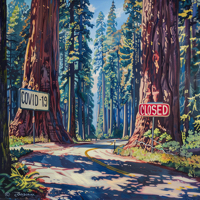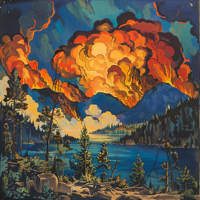 The U.S. Forest Service is looking for a few great women! According to the Angeles National Forest website, USFS fire management officials are actively searching for thirty female candidates for the Fourth Annual Women-in-Wildfire Basic Training Camp 2020 edition. This is a great opportunity to get trained for entry-level wildland firefighter jobs that are available throughout California specifically for women.
The U.S. Forest Service is looking for a few great women! According to the Angeles National Forest website, USFS fire management officials are actively searching for thirty female candidates for the Fourth Annual Women-in-Wildfire Basic Training Camp 2020 edition. This is a great opportunity to get trained for entry-level wildland firefighter jobs that are available throughout California specifically for women.
Category Archives: Wildfire
 In one of those “it’s about damned time” moments, The Department of the Interior, National Park Service, and utility companies Pacific Gas and Electric and Southern California Edison have finally started working together to to mitigate wildfire risks in California.
In one of those “it’s about damned time” moments, The Department of the Interior, National Park Service, and utility companies Pacific Gas and Electric and Southern California Edison have finally started working together to to mitigate wildfire risks in California.
 The U.S. Forest Service has announced that they’re going to postpone all new prescribed burns until further notice due to the Coronavirus. The canceled fire ignitions in California include burns in Six Rivers and Mendocino National Forests.
The U.S. Forest Service has announced that they’re going to postpone all new prescribed burns until further notice due to the Coronavirus. The canceled fire ignitions in California include burns in Six Rivers and Mendocino National Forests.
The U.S. Forest Service works in coordination with local and state health organizations when planning and managing prescribed burns and wildfires, and potential smoke impacts on the public are first and foremost in the planning process.

A fire now named the Summit Fire is burning in the San Bernardino National Forest near Forest Service Road 2N08 (to the south of the city of Big Bear Lake and west of the Snow Summit ski resort).
The fire appears to have started near Pine Knot Avenue and Knickerbocker Road around 12:30 p.m. Within an hour, the fire had grown to more than 10 acres, according to the San Bernardino County Fire Department. At last report, it had grown again to between 20 and 25 acres. It has a moderate rate of spread, and is being fueled by moderate to heavy forest growth.
There are mandatory evacuations for the area from Knickerbocker Road east to Georgia Road and south of Pennsylvania Road to the forest boundary.
08/24/15 Update (from InciWeb):

From the National Park Service:
Yosemite National Park is experiencing very high fire danger along with continued hot and dry weather patterns. Due to current and predicted fire conditions and possible active fire behavior, the park implemented Stage 1 Fire Restrictions until further notice.
By order of the Superintendent Yosemite National Park and under authority of Title 36, Code of Federal Regulations, and Section 2.13(c):
- No building, maintaining, attending or using a fire, campfire, or cooking fire (including charcoal fires) within Yosemite National Park including designated Wilderness and at High Sierra Camps below 6,000 feet in elevation. Portable stoves using pressurized gas, liquid fuel, or propane are permitted as are alcohol stoves (with and without a shutoff valve) including alcohol tablet/cube stoves. “Sierra” (twig) stoves are not permitted.
- No smoking below 6,000 feet, except within an enclosed vehicle, a building in which smoking is allowed, a campground or picnic area where wood and charcoal fires are allowed or in a designated smoking area.
- Campfires and cooking fires may still be used in designated campgrounds in developed portions of the park in accordance with park regulations.
- Designated Campgrounds: Upper Pines, North Pines, Lower Pines, Camp 4, Wawona, Bridalveil Creek, Hogdon Meadow, Crane Flat, Tamarack Flat, White Wolf, Yosemite Creek, Porcupine Flat and Tuolumne Meadows, Yellow Pine, and Housekeeping cabins.
- Cooking fires may still be used in designated picnic areas in developed portions of the park in accordance with park regulations.
- Designated Picnic areas: Lembert Dome, Tenaya Lake, Yosemite Creek, Wawona, Mariposa Grove, Glacier Point, Cascade, El Capitan, Cathedral Beach, Sentinel Beach, Swinging Bridge, Church Bowl and Lower Yosemite Falls.
- There are no administrative exemptions to this order.

